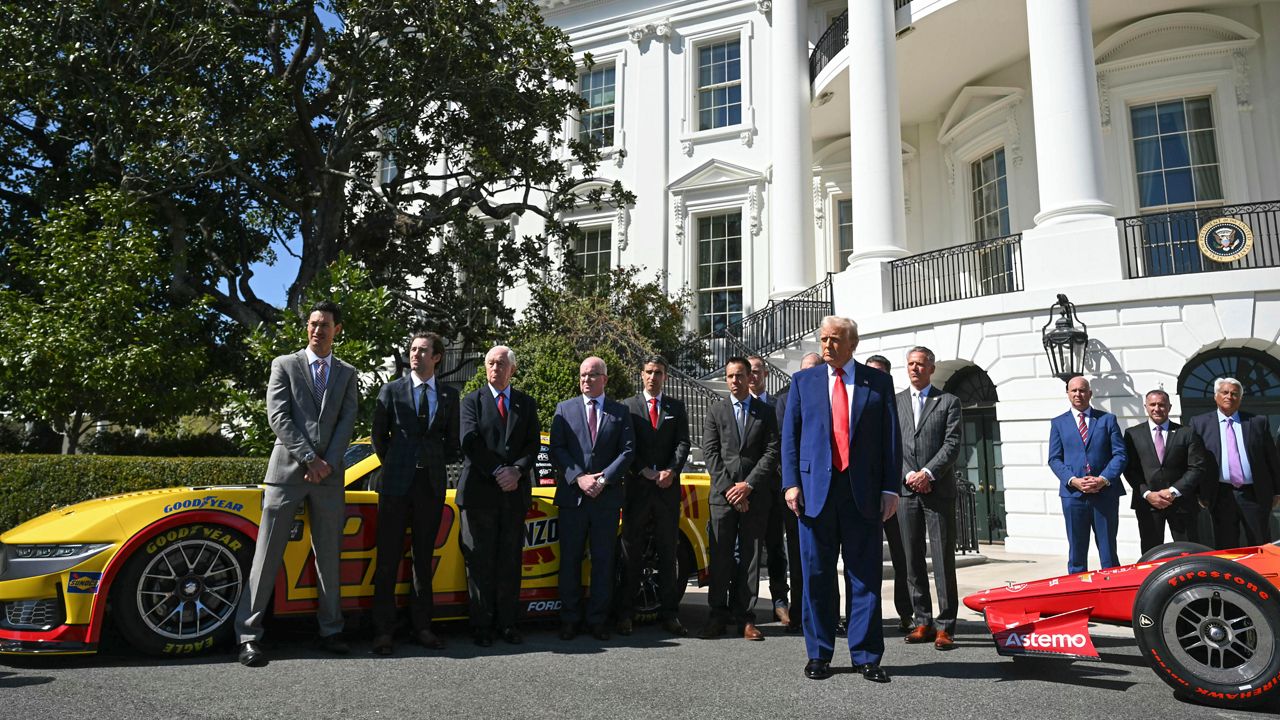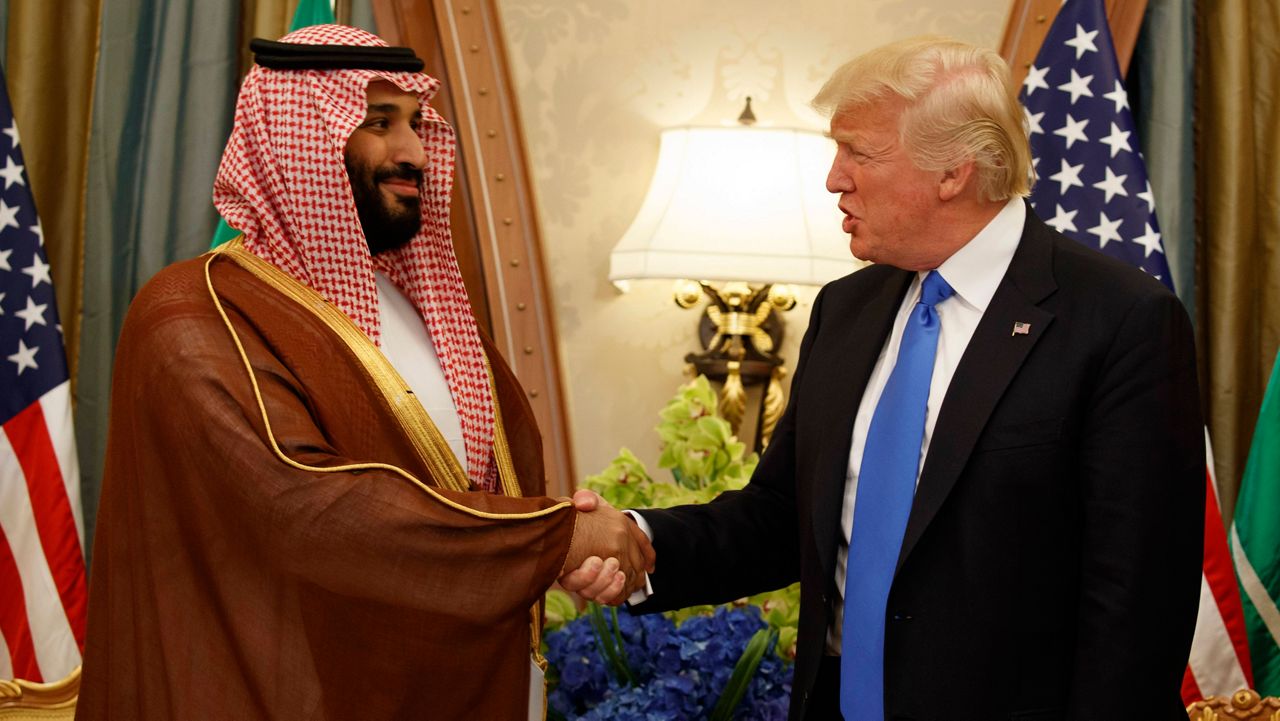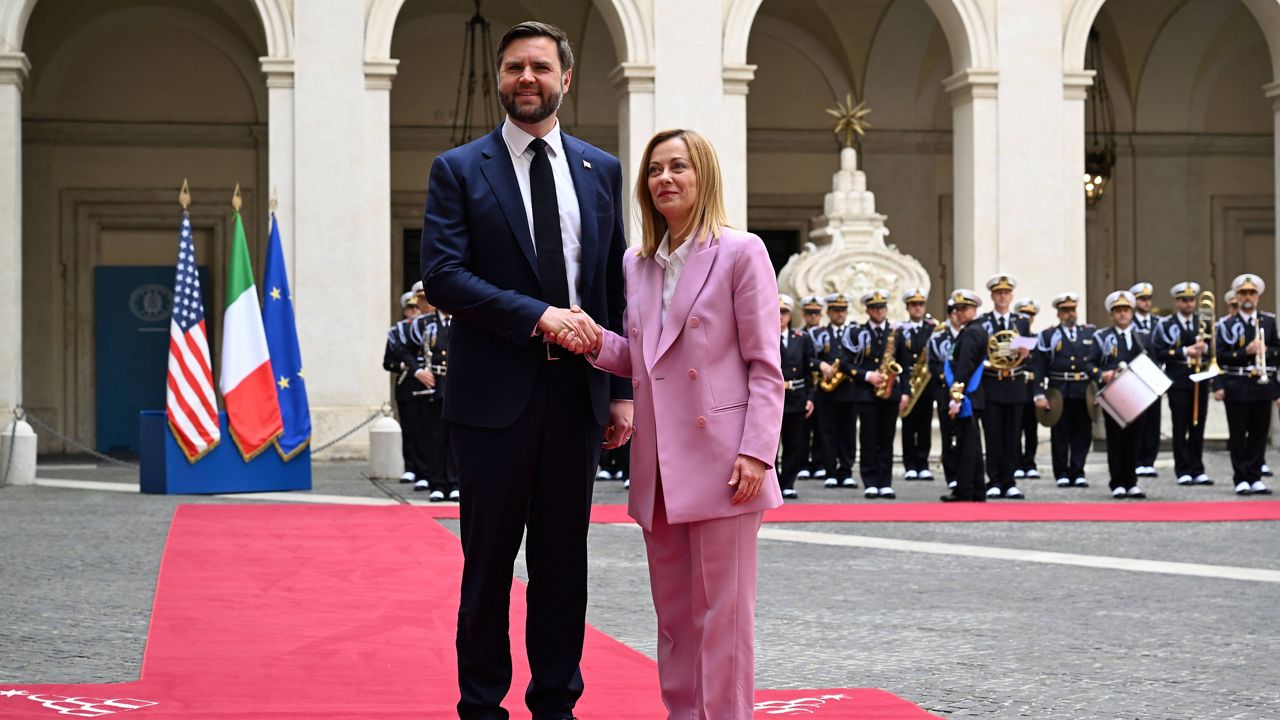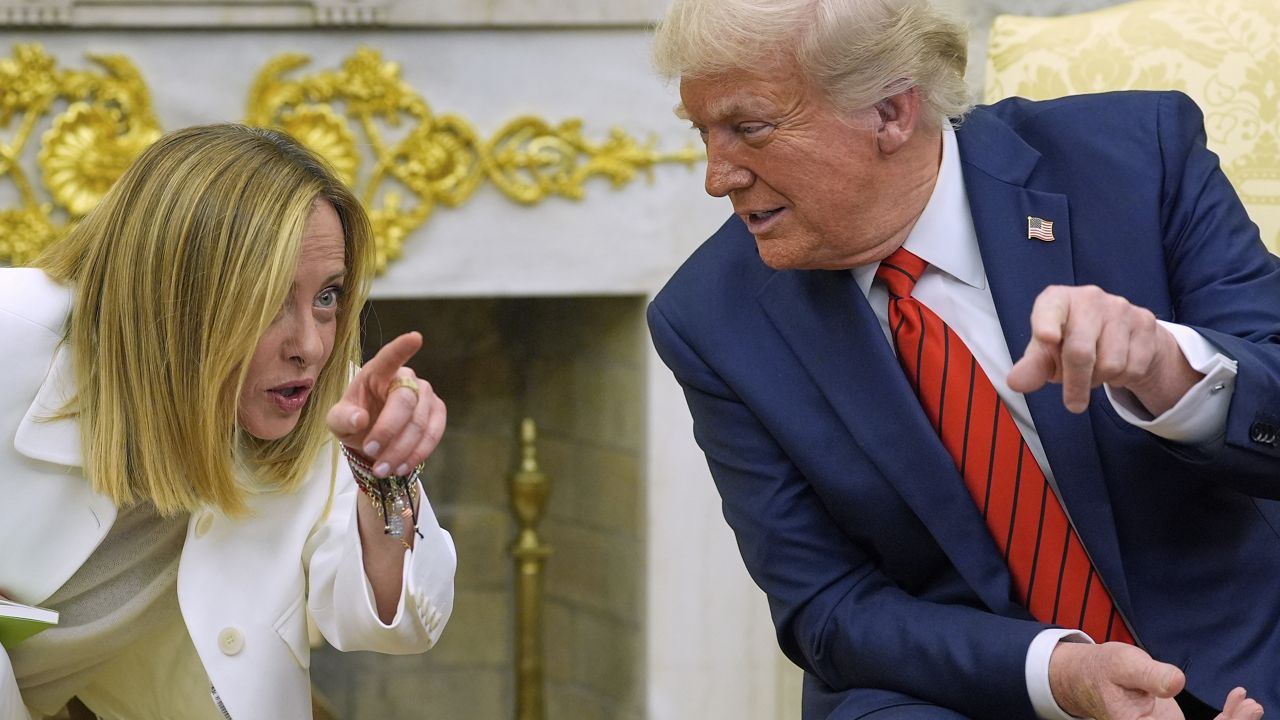WASHINGTON — After days of economic turmoil and global frustration with his tariff policies, President Donald Trump announced Wednesday afternoon a 90-day pause on many of the import taxes he placed on most countries in the world, with the exception of China.
U.S. trading markets jumped up after days of downward trends in the aftermath of Trump’s post, even as details of Trump's strategy remained unclear. Trump made the announcement abruptly Wednesday afternoon on his social media platform, Truth Social.
"I thought that people were jumping a little bit out of line. They were getting yippy, you know? They were getting a little bit yippy, a little bit afraid, unlike these champions," Trump said two hours after his announcement at an unrelated event in the White House driveway alongside auto racing champions. "We have a big job to do. No other president would have done what I did. No other president. I know the presidents. They wouldn't have done it. And it had to be done.
"If you didn't do it, you wouldn't have a country, it wouldn't be sustainable. So I'm honored to have done it," Trump added.
What You Need To Know
- After days of economic turmoil and global frustration with his tariff policies, President Donald Trump announced on Wednesday a 90-day pause on the import taxes he placed on most countries in the world, with the exception of China
- China, which has escalated its own tariffs in retaliation in recent days, will face a 125% tariff on all goods exported to the U.S. “effective immediately," the president said
- Trump made the announcement abruptly Wednesday afternoon on his social media platform, Truth Social
- U.S. trading markets jumped up after days of downward trends in the immediate aftermath of Trump’s post, even as details of Trump's strategy remained unclear
China, which has escalated its own tariffs in retaliation in recent days, will face a 125% tariff on all goods exported to the U.S. “effective immediately," the president said in his social media post at 1:18 p.m. EDT.
“Based on the lack of respect that China has shown to the World’s Markets, I am hereby raising the Tariff charged to China by the United States of America to 125%, effective immediately,” Trump wrote, adding that for countries that have not retaliated to the tariffs he announced last week he has “authorized a 90 day PAUSE, and a substantially lowered Reciprocal Tariff during this period, of 10%, also effective immediately.”
Later, at the racing event, Trump said "nothing is over yet" but that countries wanted to cut deals with the U.S. to avoid further tariffs, "including China" but that "they just don't know quite how to go about it."
"It's one of those things ... they're a proud people," Trump said. "And President Xi [Jinping] is a proud man. I know him very well, and they don't know quite how to go about it, but they'll figure it out. They're in the process of figuring it out, but they want to make a deal.
"We'll see how it all works out. I think it's all going to work out amazing. I think that our country is going to be, at the end of a year or shorter, but I think that we're going to have something that nobody would've dreamt was possible."
The response from the Chinese government has signaled its determination not to bend to Trump’s pressure, despite the risks. Beijing on Wednesday issued a travel advisory asking its citizens to evaluate risks of visiting the U.S. as tourists and to exercise caution as the trade war between the two countries escalated.
“If the U.S. insists on further escalating its economic and trade restrictions, China has the firm will and abundant means to take necessary countermeasures and fight to the end,” China's Ministry of Commerce said before announcing its latest tariff hike and prior to Trump's latest announcements.
The 10% tariff was the baseline rate for most nations that went into effect Saturday. It's meaningfully lower than the 20% tariff that Trump had set for goods from the European Union, 24% on imports from Japan and 25% on products from South Korea. Still, 10% would represent an increase in the tariffs previously charged by the U.S. government.
The announcement came after the global economy appeared to be in open rebellion against Trump's tariffs as they took effect Wednesday, a signal that the U.S. president was not immune from market pressures.
"You have to have flexibility," Trump said Wednesday afternoon.
Particularly worrisome was that U.S. government debt had lost some of its luster with investors, who usually treat Treasury notes as a safe haven when there's economic turbulence. Government bond prices had been falling, pushing up the interest rate on the 10-year U.S. Treasury note to 4.45%. That rate eased after Trump's reversal.
"The bond markety is very tricky, but if you look at it now it's beautiful. The bond market right now is beautiful. But yeah I saw last night that people were getting a little queasy," Trump said.
The S&P 500 was up 8.7% in afternoon trading just before 3:30 p.m. EDT. It had been down earlier in the morning amid worries about Trump's trade war and whether it would cause a recession as economists fear. But it spiked immediately after Trump sent the social-media posting that investors have been waiting for.
The Dow Jones Industrial Average was up more than 2,700 points, or around 7.3%, as of 3:30 p.m. EDT, and the Nasdaq composite was 11% higher.
Treasury Secretary Scott Bessent told reporters that Trump was pausing his so-called “reciprocal” tariffs on most of the country’s biggest trading partners, but maintaining his 10% tariff on nearly all global imports. Imports tariffs on goods from China, though, would surge to 125% “effective immediately” Trump said on social media.
It was seemingly an attempt to narrow what had been an unprecedented trade war between the U.S. and most of the world to one between the U.S. and China.
Bessent insisted "this was his strategy all along" when pressed on why Trump made this announcement hours after the president urged Americans to "BE COOL!" in a social media post on Wednesday morning.
“THIS IS A GREAT TIME TO BUY!!!” Trump posted Wednesday hours before he reversed his tariff policy. “BE COOL! Everything is going to work out well. The USA will be bigger and better than ever before!”
White House press secretary Karoline Leavitt said the walk-back was part of a larger negotiating strategy by Trump.
“President Trump created maximum negotiating leverage for himself,” she said, adding that the news media "clearly failed to see what President Trump is doing here. You tried to say that the rest of the world would be moved closer to China, when in fact, we’ve seen the opposite effect the entire world is calling the United States of America, not China, because they need our markets.”
Bessent has previously said it could take months to strike deals with countries on tariff rates, and the administration has not been clear on whether the baseline 10% tariffs imposed on most countries will stay in place. But in an appearance on Fox Business' “Mornings with Maria,” Bessent said the economy would “be back to firing on all cylinders” at a point in the “not too distant future.”
He said there has been an "overwhelming" response by “the countries who want to come and sit at the table rather than escalate.” Bessent mentioned Japan, South Korea, and India. "I will note that they are all around China. We have Vietnam coming today,” he said.
Even as the administration has tried to calm the world, new risks are forming.
China imposed 84% tariffs on goods from the United States. Canada now has auto tariffs to match the 25% being charged by Washington. The EU approved new taxes on U.S. goods after the 25% steel and aluminum tariffs from Trump.
Trump is already calling for more tariffs, looking at copper, lumber and computer chips. In a Tuesday night speech, he said taxes on imported drugs would happen soon.






